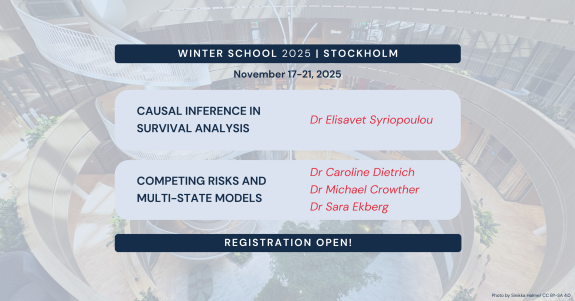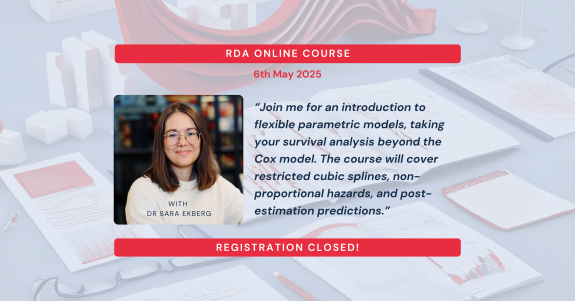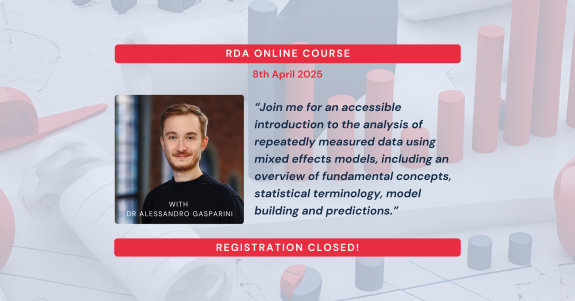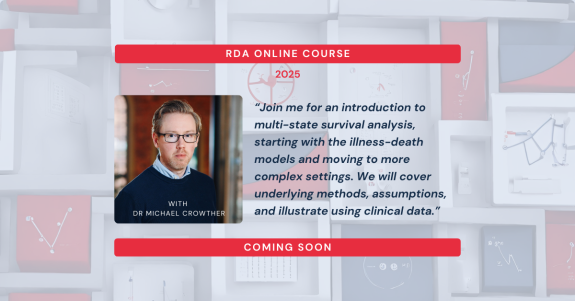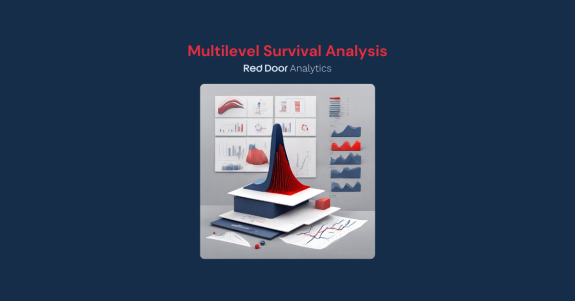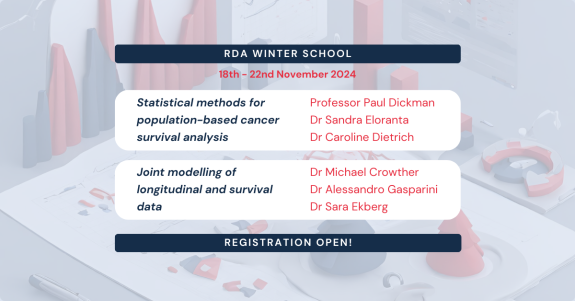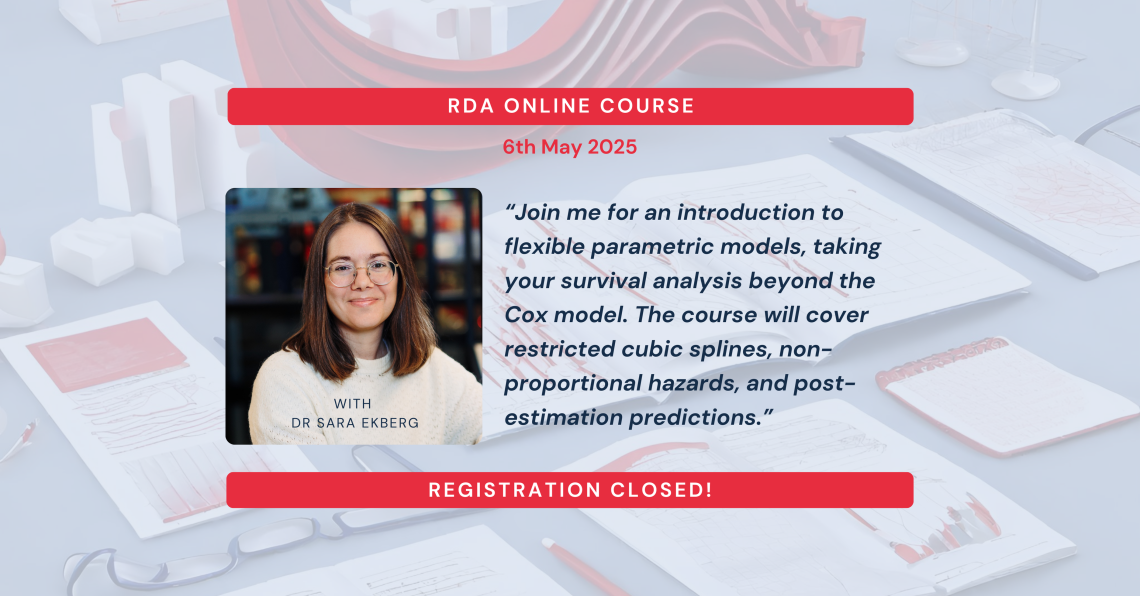
When
| Date | Time | Content |
| Tuesday 6th May 2025 | 09:00 – 12:00 | Lectures |
| 13:00 – 17:00 | Computer practical |
Where
This is a one-day online course consisting of lectures and a computer practical.
Course description
The Cox proportional hazards model remains the most popular model for survival data, especially as a means to estimate hazard ratios. However, when other quantities are of interest, such as the survival function, an estimate of the baseline hazard rate is required – which is not easily achieved with the Cox model. Then a parametric model is more appropriate. These, on the other hand, come with strict a priori assumptions about the functional form of the baseline hazard rate. As an alternative, flexible parametric survival models (or Royston-Parmar models) model the baseline hazard rate directly using restricted cubic splines, hence avoiding strict assumptions regarding its functional form, while still providing easy predictions.
This course will provide an introduction to flexible parametric models, restricted cubic splines, and post-estimation predictions. Modelling time-dependent effects will also be described in detail and predictions from such models illustrated. Overview of lectures content:
- Brief review of time-to-event data and introduction to splines and flexible parametric survival models, including the Royston-Parmar model and the spline-based Cox model. Introduction to the stmerlin package in Stata.
- Extensions to modelling time-dependent effects (i.e., non-proportional hazards).
- Predictions from flexible parametric survival models, interpretable measures of risk, and conditional/marginal measures.
Faculty
Sara Ekberg, PhD
Principal Biostatistician
What to expect
The course instructor has formal training in statistics and biostatistics, and experience in both developing statistical methods and applied clinical research. The course will consist of a mix of statistical concepts and applied examples, with emphasis on interpretation and practical aspects (such as computing). Course material, including lecture slides, tutorial exercises and solutions, and additional references for further reading will be provided.
Computing
The primary software for the course will be Stata (version 17 or higher), but full R solutions to all practical exercises will also be provided.
Who should attend
Epidemiologists, statisticians, physicians, public health specialists or anyone with an interest in modelling time-to-event data. The course focuses on the use of flexible parametric survival models in medical settings, but we welcome participants with interests in other areas; the methods we teach can be applied to other research areas as well.
Expected prior knowledge
We expect participants to possess basic knowledge of the fundamentals of epidemiology and biostatistics and be comfortable fitting and interpreting statistical models in survival analysis (e.g., Poisson regression, or Cox regression). For a refresher, check out our free Youtube course! Prior basic knowledge of Stata will be assumed.
Course certificate
When the course is completed and attendance has been at least 80%, a certificate will be given.
Fees
| Early Bird (ends 4 April) | Regular (5 April-) | |
| Academic | 2,250 SEK | 2,500 SEK |
| Industry | 3,250 SEK | 3,500 SEK |
| (All fees excluding VAT) | ||
Registration
Registration closed
To keep up to date on when the next edition of this course (and all our other courses!) will be running, scroll down to sign up to our newsletter!

